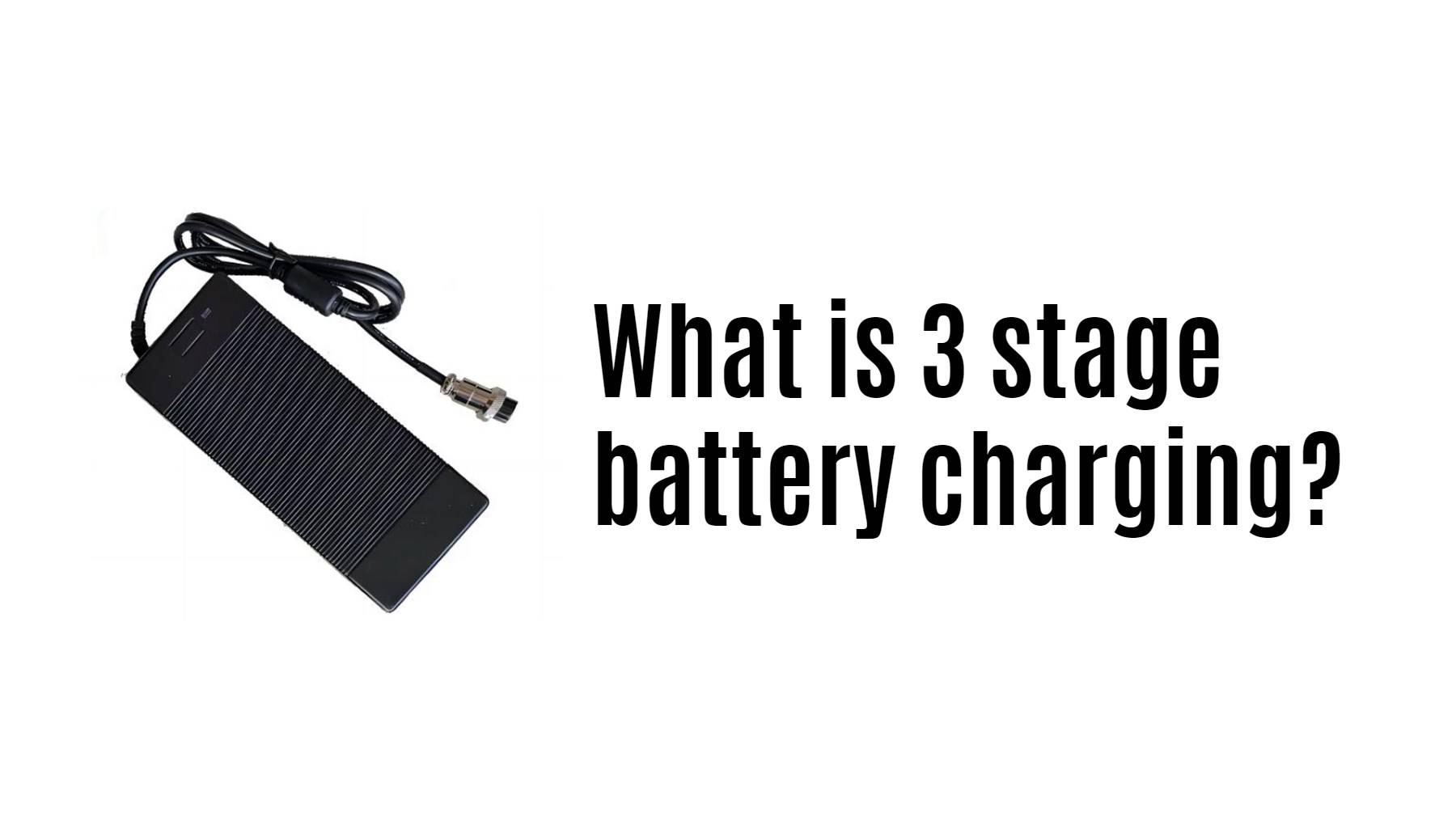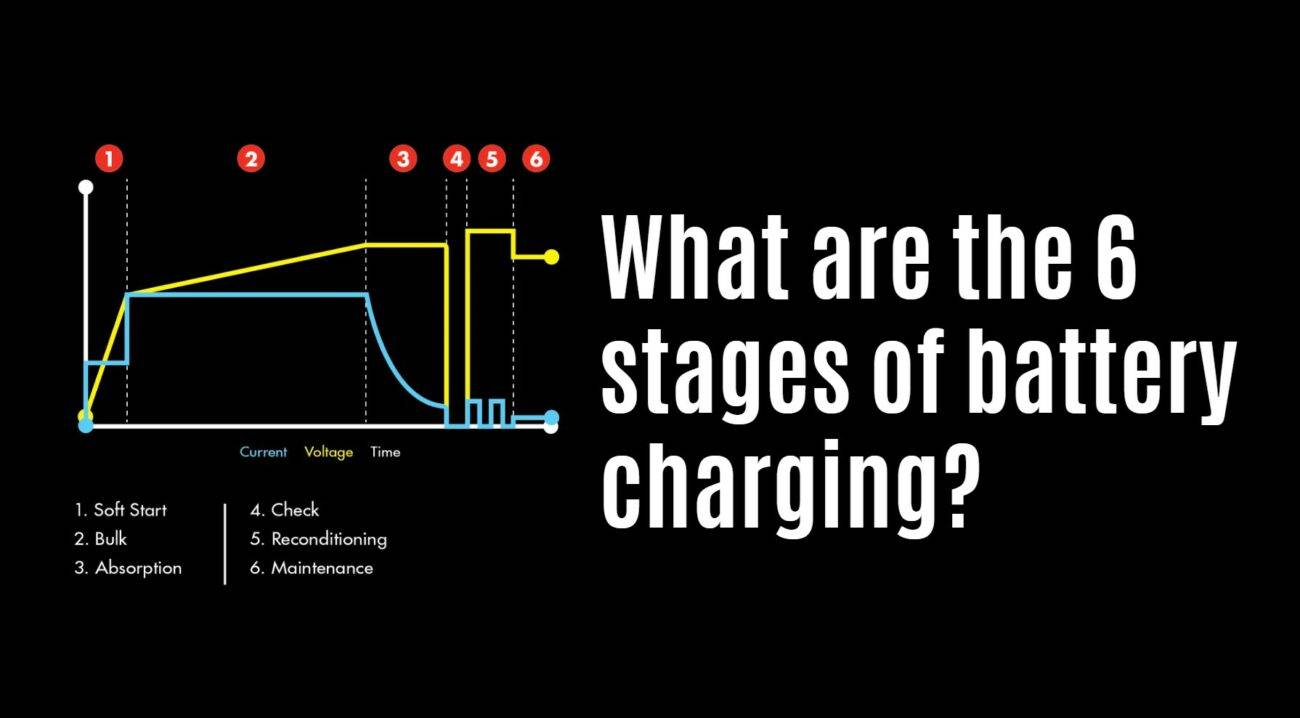
Blog
What Is 3 Stage Battery Charging and How Does It Work?

Three-stage battery charging is a method that optimizes the charging process for batteries, enhancing efficiency and prolonging battery life. This method consists of three distinct phases: bulk, absorption, and float. Understanding these stages can help users maintain their batteries effectively and ensure optimal performance.
What Are the Three Stages of Battery Charging?
The three stages of battery charging are:
- Bulk Charge: This initial phase delivers maximum current to quickly charge the battery until it reaches approximately 80% capacity.
- Absorption Charge: In this phase, the charger maintains a constant voltage while gradually reducing the current to allow the battery to reach full charge without overheating.
- Float Charge: The final stage keeps the battery at full charge without overcharging, providing maintenance power to connected devices.
Chart: Overview of the Three Stages
| Stage | Description | Voltage Behavior |
|---|---|---|
| Bulk Charge | Rapid charging to about 80% capacity | Voltage increases |
| Absorption Charge | Slow charging to full capacity | Constant voltage |
| Float Charge | Maintenance mode to prevent overcharging | Voltage held steady |
How Does Each Stage Function in the Charging Process?
- Bulk Charge:
- The charger applies maximum current to quickly replenish the battery.
- This phase lasts until the battery voltage reaches a predefined level (approximately 14.4V – 14.8V for lead-acid batteries).
- Absorption Charge:
- Once the battery reaches about 80%, the charger switches to a constant voltage mode.
- The current gradually decreases as the battery approaches full charge, allowing for a safe and efficient charging process.
- Float Charge:
- After reaching full charge, the charger enters float mode.
- It maintains a lower voltage (around 13.2V – 13.5V) to keep the battery topped off without causing overcharging.
Why Is 3 Stage Charging Beneficial for Battery Life?
Three-stage charging offers several key benefits:
- Extended Lifespan: By preventing overcharging and sulfation, batteries can last significantly longer.
- Improved Performance: Thorough charging cycles enhance overall performance, ensuring devices operate efficiently.
- Flexibility: This method is suitable for various battery types, including lead-acid, AGM, and gel batteries.
Chart: Benefits of Three-Stage Charging
| Benefit | Description |
|---|---|
| Extended Lifespan | Reduces wear and tear on battery components |
| Improved Performance | Ensures devices run efficiently |
| Flexibility | Compatible with multiple battery types |
What Types of Batteries Benefit from 3 Stage Charging?
Three-stage charging is particularly beneficial for:
- Lead-Acid Batteries: Including flooded, AGM, and gel types.
- Lithium-Ion Batteries: While they often require different voltage levels, many chargers adapt to provide effective three-stage charging for lithium batteries as well.
Understanding which batteries benefit from this method can help users choose appropriate chargers.
How Do Temperature and Battery Condition Affect Charging?
Both temperature and battery condition play critical roles in the effectiveness of three-stage charging:
- Temperature Effects:
- High temperatures can accelerate chemical reactions but may also lead to overheating.
- Low temperatures can reduce charging efficiency and increase charge time.
- Battery Condition:
- A degraded or damaged battery may not respond well to charging, potentially leading to incomplete cycles or failure to hold a charge.
Monitoring these factors ensures optimal performance during the charging process.
Can You Use a 3 Stage Charger for All Battery Types?
While three-stage chargers are versatile and suitable for many types of batteries, it’s essential to ensure compatibility:
- Lead-Acid Batteries: Most commonly used with three-stage chargers due to their specific voltage requirements.
- Lithium-Ion Batteries: Some chargers are designed with lithium-ion compatibility but may need adjustments in voltage settings.
Always refer to manufacturer guidelines when using chargers across different battery types.
Tips for Battery Wholesale Buyers
When purchasing batteries wholesale or making OEM orders, it’s crucial to choose a reliable manufacturer like Redway Power, which has over thirteen years of experience in lithium battery manufacturing. They offer various lithium-ion products that serve as excellent alternatives to lead-acid batteries. To make OEM orders effectively:
- Research potential suppliers thoroughly.
- Request samples to evaluate quality.
- Discuss customization options based on your needs.
- Ensure clear communication regarding specifications and delivery timelines.
Redway Power Expert Views
“Implementing three-stage charging technology is essential for maximizing battery performance and lifespan,” states an expert from Redway Power. “By understanding how each stage functions, users can ensure their batteries remain healthy and efficient over time.”
FAQ Section
- What is three-stage battery charging?
Three-stage battery charging consists of bulk, absorption, and float phases that optimize the charging process for various battery types. - Why is three-stage charging beneficial?
It extends battery life by preventing overcharging and enhancing performance through thorough charge cycles. - Can all batteries use three-stage chargers?
Most lead-acid batteries are compatible; however, lithium-ion batteries may require specific settings or chargers designed for them. - How does temperature affect battery charging?
High temperatures can cause overheating while low temperatures may reduce efficiency; both should be monitored during charging.





